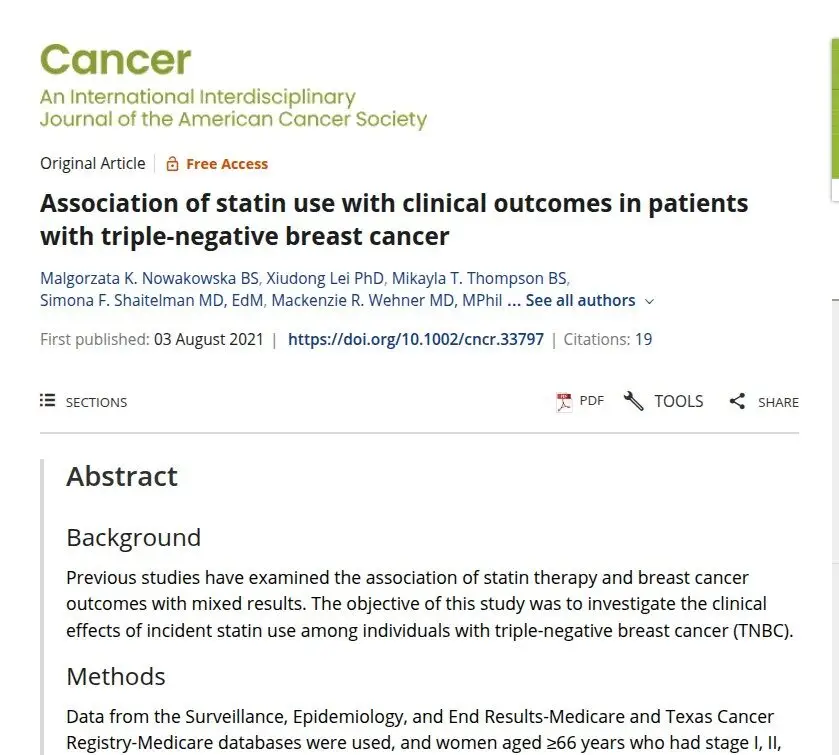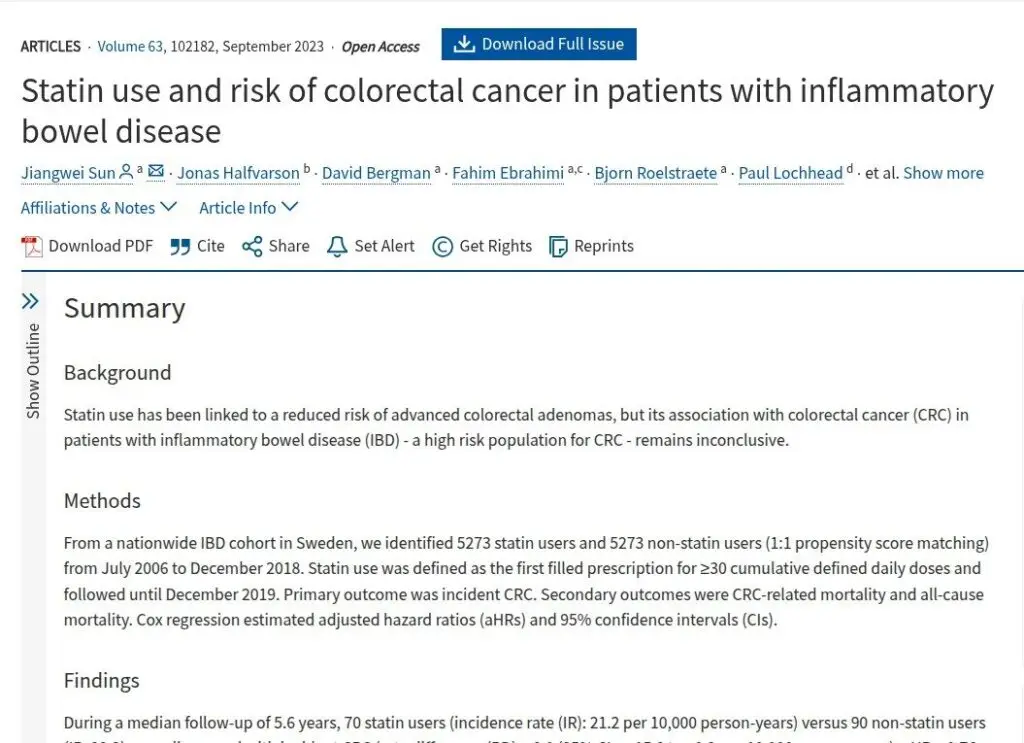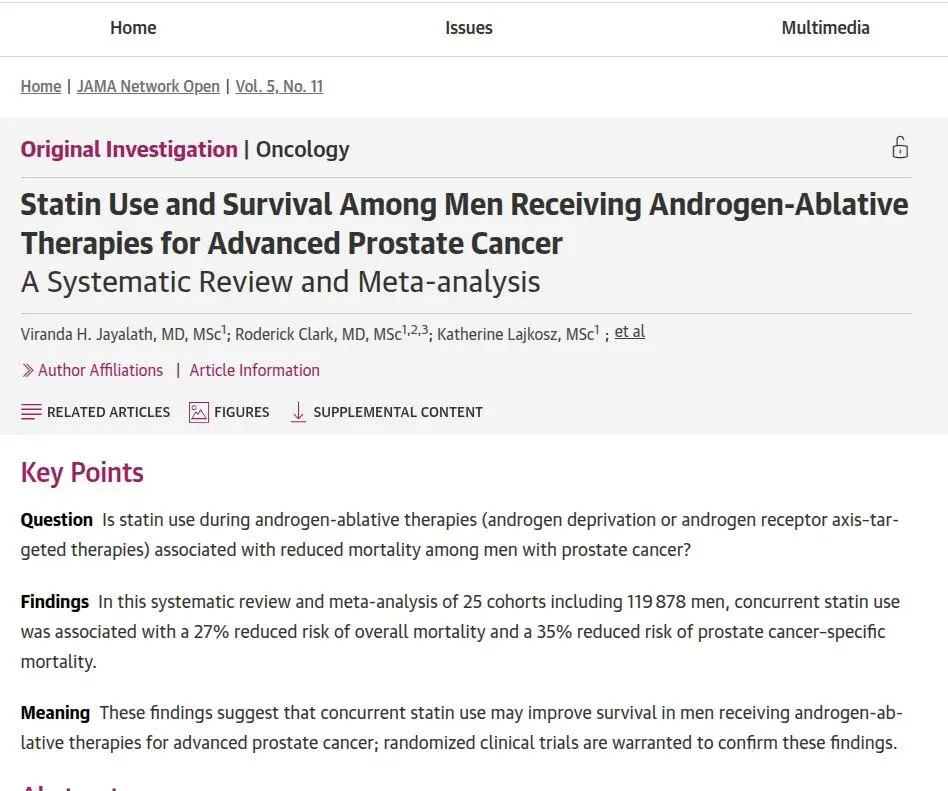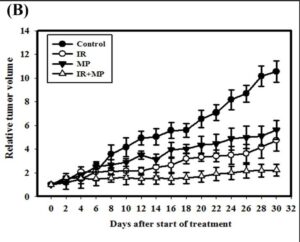Red Yeast Rice is a widely available well proven used natural statin. Its active ingredient monocolin k is the source of lovastatin, the original lipophilic class drug still in large scale use. These work by reducing levels of enzymes needed for cholesterol production. A prescription for atorvastatin or simvastatin might, for some, be even more effective. Though with higher risk for side effects in some treatment regimes. Studies report red yeast rice is highly absorbed and 3mg monocolin K in a typical dose has a effect equal to 10mg pharma grade lovastatin. Exactly as with most newer oncology drugs, there is a compelling need to target their use to specific cancers and patient cases.
Illustrating differing findings in breast cancer patient data, a 2021 report highlighted significant risk reductions focused in early stage triple negative type (TNBC) cancers. A more recent study showed that all types of breast cancer patients could see reduced risk when statin initiation resulted in substantial lowering of cholesterol. Meaning in effect these patients are “responders”. In that 2023 Finnish breast cancer study data ER+, PR- and HER2+ positive patients with localized disease approximately half the progression risk – for about 80% of post diagnostic statin users that experienced lowered cholesterol levels. (Highlights). And a similar survey of patients in Norway found 16% reduced risks for statin users, higher for ER- and TNBC types. A New Zealand-based study found post-diagnostic statin use and reduced risk around 26% mainly in ER positive patients, postmenopausal women, and those with advanced-stage disease. Overall, those that benefit from statins do so even for all cause mortality.
A high quality analysis of swedish ulcerative colitis patients statin use vs the incidence and progression of colorectal cancer in was published recently. Results showed post diagnosis risk reductions of approximately a half, and about a third lower all cause mortality (Highlight 3). Analysis on liver cancers found about 15% risk reductions, while in gastric cancer case history some reports find 1/3 to 2/3 improved relative survival rates (see References)
Most published data finds improved outcomes in prostate cancer, typically 25 to 30% relative risk improvement. For instance, large meta-analysis from 2022 reports overall risk reductions of 27%. Clinical trials report very differing results, as indeed is true with many new oncology drugs. Importantly, and in contrast to drugs, there are small studies showing important reductions to oncology side effects with lovastatin, showing better recovery from prostatectomy. In advanced kidney cancer, similar analysis shows around 22% relative risk reductions with statin use. At least one trial shows improved outcomes with TKI treatment in clear cell kidney cancer. (see References). Some studies show risk reduction are greatest for pre-diagnosis users, and those who respond with reduced cholesterol levels. Not all research confirms these effects in pre-diagnostic use though.
There is good evidence for the anti-metastatic actions of statins including red yeast rice. Some research report increased in effects when combined with low dose aspirin but also high dose omega 3 and the lesser known nattokinase enzyme supplements used in cardiovascular health especially risk of clotting. (click the icon for references). Some statin users experience negative cognitive side effects. Even though research evidence finds no connection, combinations can be a good option for many and its important to seek out trusted brands. There are also commerical products such as Berberol K that usefully combine red yeast rice with berberine and have quality guarantees on refinement.
Statins can reduce risk for serious side effects in some areas but not all. Particularly cardiovascular events. Studies there include with chemotherapy for lymphoma and targeted inhibitors for HER2+ breast cancer
In terms of cancer prevention, a large scale dual center meta-analysis shows about a 25% typical risk reduction and lovastatin use halves cancer incidence with low dose aspirin. A new 2024 large scale meta-analysis finds reduced cancer rates for 21 types due to statin use. (see Examples). After comparisions with 38 multi-national studies, the publication lends highest weight of evidence to prostate, gastric and liver cancer prevention.











